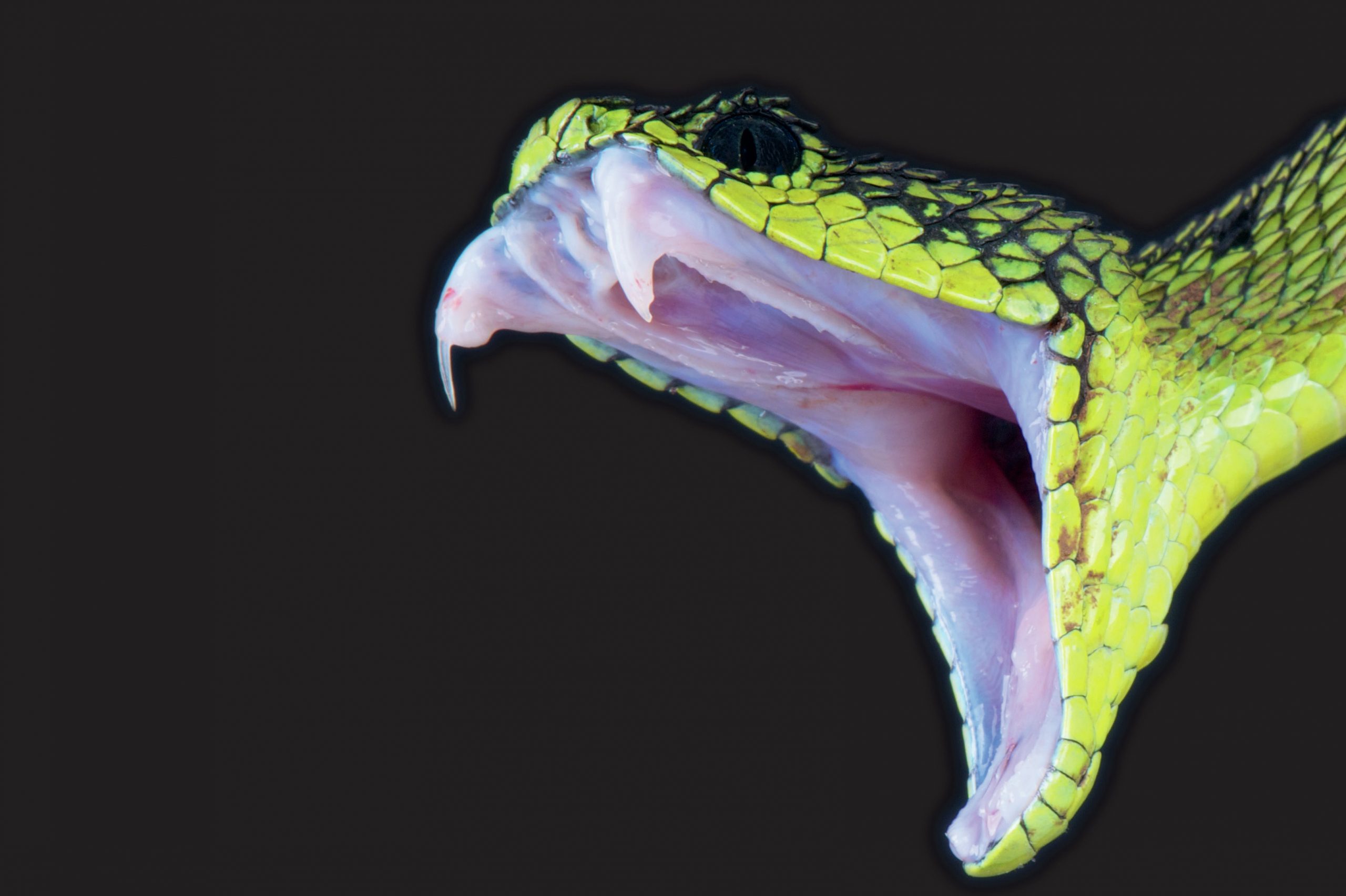
Of the 2340 known species of snake, approximately 420 are venomous.Around 5 million snake bites are recorded globally each year, and at least 125 000 victims die. Snake venom can contain many different toxins. Those that target the nervous system are called neurotoxins. Many venoms contain several neurotoxins that work together to prevent the nervous system from functioning, thus immobilising prey.
Many neurotoxins disrupt the transmission of impulses that make muscles work, by affecting events within the neuromuscular junction (see Figure 1). Electrical impulses travel along the length of a motor neurone until they reach a junction with a muscle cell. Impulses reaching the terminal of the neurone cause an influx of positive ions, including sodium and calcium (see BIOLOGICAL SCIENCES REVIEW, Vol. 31, No. 3, pp. 2–6). This stimulates the vesicles containing the neurotransmitter acetylcholine to fuse with the surface membrane of the neurone. As a result, the vesicles release their acetylcholine, which diffuses across the gap and binds to specific receptors on the muscle cell, leading to influx of calcium ions from the sarcoplasmic reticulum. These ions fuse with troponin, exposing the binding sites of actin molecules, which triggers contraction.
Your organisation does not have access to this article.
Sign up today to give your students the edge they need to achieve their best grades with subject expertise
Subscribe




